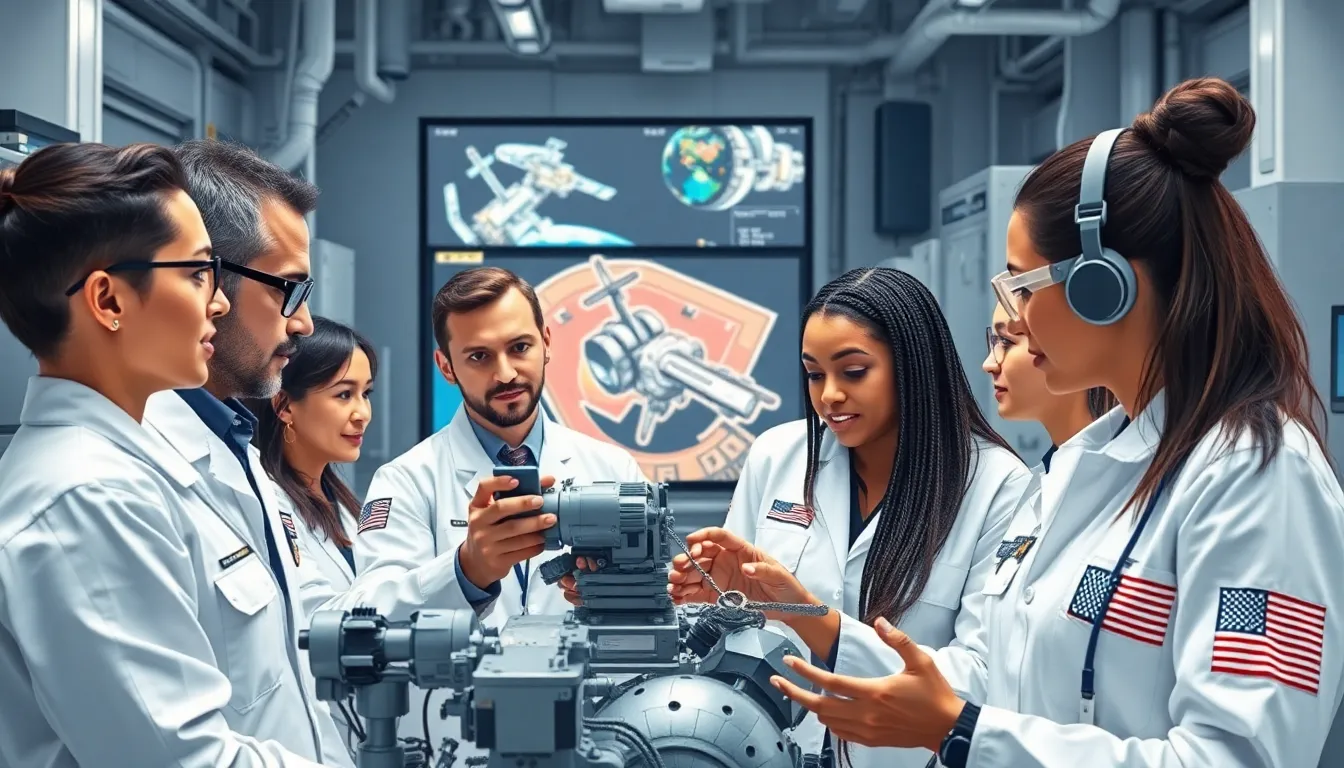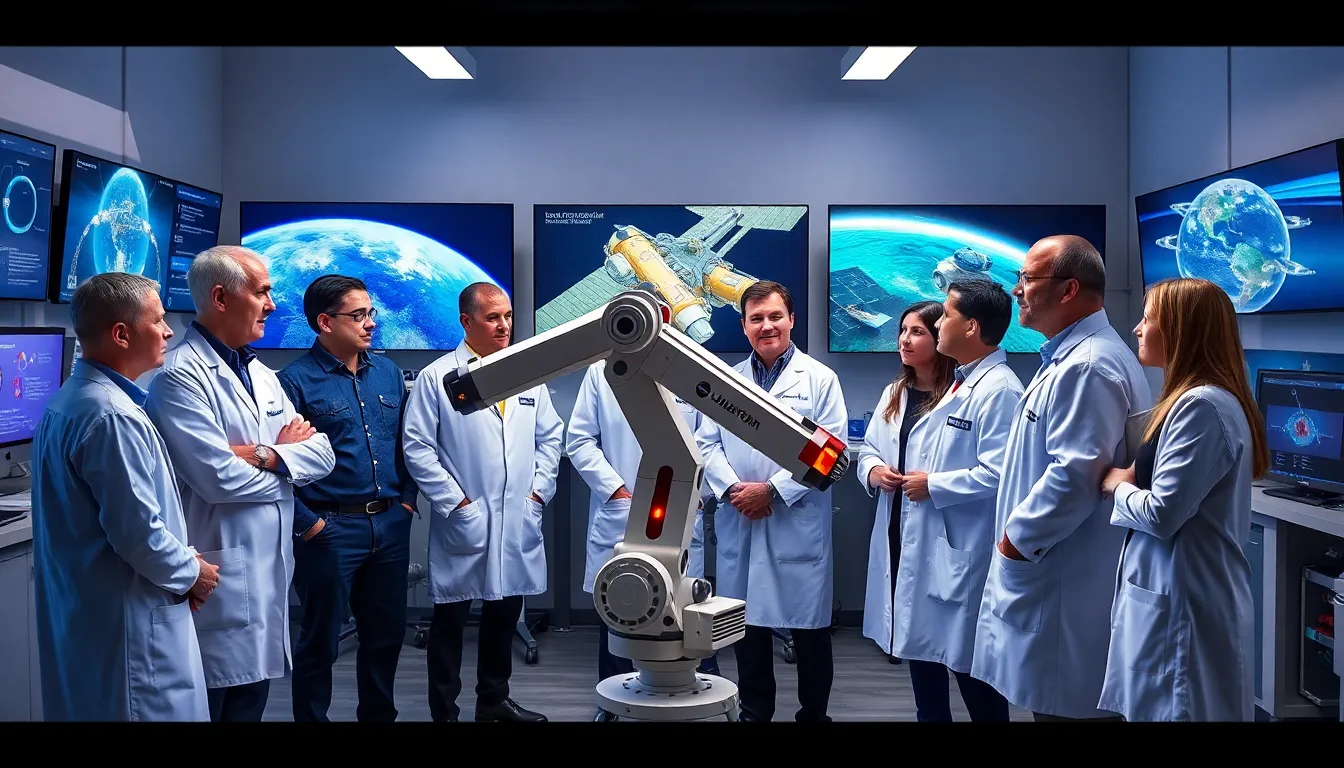In a universe brimming with possibilities, the Space Technology Mission Directorate (STMD) stands as the rocket fuel propelling humanity’s quest for the stars. Imagine a team of brilliant minds, armed with cutting-edge technology, working tirelessly to make space exploration not just a dream but a reality. They’re like the Avengers of the cosmos, but with fewer capes and more satellites.
Table of Contents
ToggleOverview Of Space Technology Mission Directorate
Space Technology Mission Directorate (STMD) plays a crucial role in the advancement of innovative technologies that support NASA’s initiatives. Their focus lies in developing cutting-edge capabilities that enhance human and robotic space exploration. STMD prioritizes research, development, testing, and evaluation of technologies.
Investment in various fields allows STMD to address critical challenges in space exploration. It leads projects in areas such as robotics, materials science, and propulsion technologies. The directorate enhances partnerships with academia, industry, and international space agencies. Collaboration boosts the impact of their projects and multiplies opportunities for innovation.
Funding for new technologies stems from Congressional appropriations aimed at supporting the directorate’s objectives. Through strategic investments, STMD ensures a pipeline of advancements for future missions. Projects include the development of in-space manufacturing capabilities and advanced life support systems.
Innovation fosters rapid advancement in space travel. They explore new technologies that could reduce costs and improve mission success rates. Mission concepts are evaluated to determine the feasibility of emerging technologies that push the boundaries of current exploration efforts.
Annual reports highlight accomplishments and future goals. Recent achievements include successful demonstrations of new robotics systems designed for surface exploration. These contributions underscore STMD’s commitment to making space exploration more efficient and sustainable.
Active research initiatives continue to evolve, focusing on transformative technologies that enhance human understanding of space. Prioritizing sustainability, STMD seeks to develop technologies that ensure long-term exploration feasibility. The ongoing mission aims to bring humanity closer to the stars, fulfilling the vision of a future where space exploration thrives.
Key Objectives

The Space Technology Mission Directorate (STMD) aims to lead in the development of innovative technologies that enable successful space exploration. This includes a focus on advancing various key areas to drive the future of space missions.
Advancing Space Technology
STMD pushes the boundaries of technology through investment in robotics, materials science, and propulsion systems. Continuous research and development efforts focus on overcoming challenges and enhancing mission capabilities. Working closely with academic institutions and industry partners, STMD fosters innovative solutions. Significant advancements materialize from these collaborative initiatives, amplifying the potential for future space exploration. Recent achievements include notable demonstrations of advanced robotic systems tailored for surface exploration.
Supporting NASA’s Mission
Supporting NASA’s mission remains a foremost objective for STMD. Ensuring all technological developments align with the broader goals of space exploration drives strategic decision-making. Through comprehensive funding from Congressional appropriations, STMD secures essential resources to advance key projects. Initiatives such as in-space manufacturing and advanced life support systems exemplify STMD’s commitment to enhancing mission success and sustainability. By prioritizing transformational technologies, STMD strengthens NASA’s capacity to embark on new exploratory ventures.
Major Initiatives
The Space Technology Mission Directorate prioritizes several initiatives that drive technological advancements for space exploration.
Development of New Technologies
STMD focuses on creating innovative technologies that enhance space missions. Robotics play a central role in this development. Breakthroughs in materials science improve spacecraft durability and performance. Advanced propulsion systems enable faster travel beyond low Earth orbit. Recent successes include demonstrations of new robotics designed for surface exploration. Each achievement supports NASA’s broader objectives of expanding human presence and understanding in the cosmos. STMD ensures that every technological advance aligns with specific mission requirements.
Partnerships and Collaborations
Collaborative efforts lie at the heart of STMD’s mission. Partnerships with industry leaders and academic institutions foster innovation. Joint projects often lead to significant breakthroughs in space technology. International collaborations enhance capabilities and resources through shared expertise. By engaging with various players in the space sector, STMD amplifies its research and development impact. These synergistic relationships support the continuous advancement of technologies vital for future exploration missions. Each partnership reinforces NASA’s goal of sustainable and successful space exploration.
Impact on Space Exploration
Space Technology Mission Directorate significantly enhances NASA’s explorational capabilities by developing innovative technologies. Its focus on cutting-edge robotics and propulsion systems drives initiatives that elevate mission success rates. Enhanced in-space manufacturing capabilities facilitate new methods of construction beyond Earth, which streamline processes. Improved life support systems ensure astronauts’ safety and sustainability during extended missions. Such advancements create a robust framework for future explorations, benefiting both human and robotic endeavors.
Enhancing NASA’s Capabilities
Innovative technologies developed by STMD empower NASA to undertake more ambitious missions. Robotics advancements play a pivotal role in surface exploration, allowing for increased operational efficiency. Enhanced propulsion systems reduce travel time to distant destinations, facilitating quicker access to new celestial bodies. New materials science breakthroughs contribute to the durability and reliability of spacecraft, ensuring long-term mission success. Collaboration with academia and industry strengthens these efforts, leading to exceptional results that expand NASA’s overall mission capabilities.
Contributions to Science and Research
STMD significantly propels scientific discovery by facilitating research initiatives. Supported projects deliver critical data essential for understanding extraterrestrial environments and phenomena. Each successful demonstration of new technologies leads to enhanced gathering and analysis of scientific information. Partnerships with academic institutions drive innovative research themes that align with NASA’s exploration goals. By prioritizing advancements in technology, STMD fosters breakthroughs that enrich scientific knowledge across various fields within space exploration.
Future Directions
STMD focuses on pioneering initiatives that shape the future of space exploration. New technologies and strategic frameworks guide current and future projects.
Upcoming Projects
Upcoming projects spotlight advancements in robotics and propulsion. Enhanced autonomous systems will facilitate surface exploration. In-space manufacturing capabilities promise to revolutionize resource utilization. Technologies developed through STMD will enable missions to Mars and beyond. Collaborations with international partners will strengthen these projects, bridging expertise and knowledge. Notable demonstrations will occur in the next few years, showcasing robotics and life support systems. Research endeavors will concentrate on addressing challenges in extreme environments.
Long-term Goals
Long-term goals target sustainability and cost reduction in space missions. Investment in advanced materials science will yield lighter, stronger spacecraft. Emphasis on revolutionary propulsion systems will reduce travel time across vast distances. Innovative partnerships with academia and the private sector will drive breakthroughs. Expanding human presence in the cosmos remains a central focus. Collaboration with international space agencies will enhance shared resources and knowledge. Engineering solutions for challenges in deep space exploration will continue to evolve as new technologies emerge.
The Space Technology Mission Directorate stands at the forefront of innovation in space exploration. Its commitment to developing groundbreaking technologies ensures that NASA can tackle the challenges of the cosmos effectively. Through strategic partnerships and investments in key areas like robotics and propulsion, STMD not only enhances mission success rates but also paves the way for sustainable exploration.
As STMD continues to push the boundaries of what’s possible, its initiatives will undoubtedly shape the future of space travel. The ongoing focus on collaboration and technological advancement promises to unlock new opportunities for discovery, making the dream of exploring the universe more attainable than ever.




